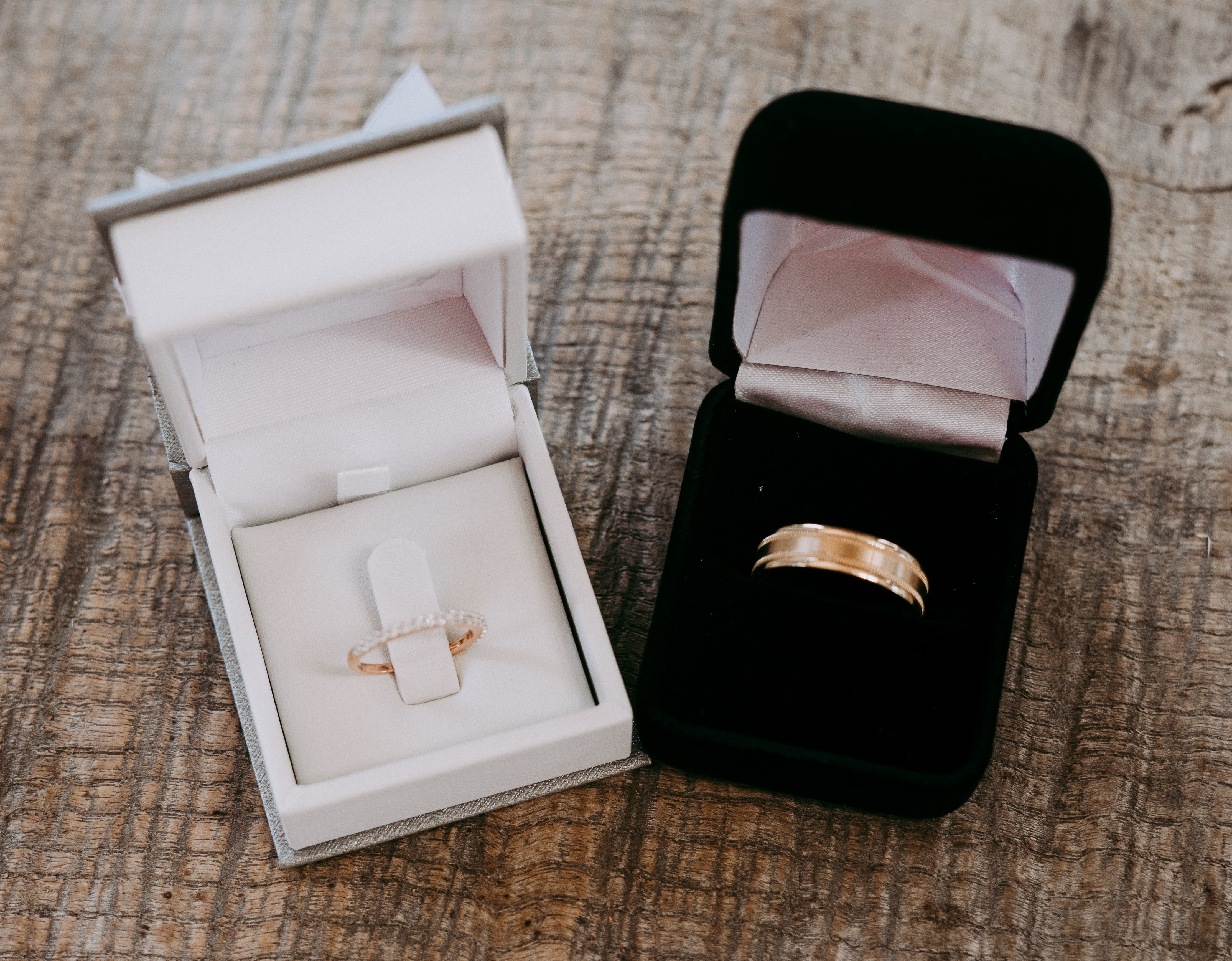How Foreigners Can Get Married with Filipinas in the Philippines [Marrying a Foreigner in the Philippines]
Saying I Do to the love of your life and promising life together is one of the best chapters in a Couple’s Life. If you are a Filipino and a Foreigner couple planning to have a wedding in the Philippines, this guide is for you. Here are steps on how Filipinos and foreign nationals can get married in the Philippines.

Filipino to Filipino weddings is easier to process. If you are getting married to a Foreign National, then your partner would need a Legal Capacity to Contract Marriage or a document that equals that. It will prove that your partner is indeed single and can marry you and that no one objects to your Marriage. You don’t want to experience “Itigil ang Kasal” scenes like the movies, right? So follow these steps to your happy ever after.
- Civil Wedding Requirements – How to Get Married in the Philippines
- Apostille Certificate: How To Authenticate Documents In DFA Philippines
- How to get married by Elvis in Las Vegas? Our British-Filipina Wedding Experience
- How to Schedule a DFA Online Appointment to Get a Philippines Passport
- How To Get a Barangay Clearance in the Philippines
Table of Contents
Steps On How Filipinos and Foreign Nationals Can Get Married in the Philippines
STEP 1: Get a Certificate of Legal Capacity to Contract Marriage (Foreign National)
This is a certificate stating that there are no legal impediments on your Marriage with your Foreign Spouse. Your foreign partner can marry as there are no objections of Marriage in the town s/he resides; s/he is not married to another person or is already divorced, etc.
Foreigners may get it in their Consulate or Embassy based in the Philippines. Getting it may take a day in some Embassies, but there are others like Switzerland 4-6 months. Make sure you have an appointment and that documents are complete for a faster transaction. Filipino Fiancés can’t claim in on behalf of the foreigner.
Common Requirements in getting a Certificate of Legal Capacity to Contract Marriage
1. Certificate Of No Impediment (CNI) to Marry – This can be obtained from the Registrar’s Office in the foreigner’s place of residence. Getting a CNI depends on your home or country as they will make a notice and check if there are no objections if your partner is to be wed. It’s kind of like the public notice from getting a marriage license. The foreigner can also get this through the Embassy in the Philippines.
2. Original Passport or Birth Certificate
3. Divorce Decree absolute or death certificate of a deceased spouse, if applicable – should your Foreign partner be divorced, a divorce decree stating that the Marriage is terminated should be submitted. If the foreigner is widowed, provide the Death Certificate of the spouse.
4. Processing Fee
Specific requirements from the Embassy
- Australian Nationals can read this to get a CNI.
- For British Nationals, this is the instructions for Marriage in the Philippines.
- Canadian Embassy issues a Statutory Declaration in place of the Certificate, here’s the requirement
- The Chinese Embassy issues an Affidavit in lieu of Certificate of Legal Capacity to Contract Marriage, here are the requirements and how to apply.
- German Nationals can check these instructions.
- For Japanese Nationals, here are the requirements.
- Swiss Nationals may read this to request for a legal capacity to marry.
- US Citizens can’t get a Legal Capacity to Contract Marriage but an Affidavit In Lieu of a Certificate of Legal Capacity to Contract Marriage. You’ll need to book an appointment here and follow this guide.
For other nationalities, you can ask your Embassy on what to submit for to get a Legal Capacity to Marry. It usually is valid for 6 months.
STEP 2: Getting a Marriage License
Apply for a marriage license in the local civil registrar office in the hometown or the residence of the Filipino partner.
Main requirements in getting a marriage license (both parties)
- Marriage License Application Form – you can get this from the civil registrar’s office
- PSA Birth Certificate – the Foreign partner, can submit a Birth Certificate from his/her country
- CENOMAR – PSA Certificate of No Marriage, your foreign partner needs this too (just to make sure they haven’t indeed married to another person in the Philippines)
- Certificate of Attendance in Pre-Marriage Counseling – both of you needs to attend the seminar together
- Valid IDs
- Personal Appearance
- Community Tax Certificate or CEDULA
- Photos
- Parental Consent or Advice – if Filipino partner is aged 18-21, parental consent is needed. Parents need to have an appearance or make an Affidavit of Consent that is signed by 2 witnesses. For those 22-25 years old, your parents need to appear at the local registrar or make a sworn statement stating that you informed them, but they refused.
Pay for the license fees and wait for 10 days to get your marriage license. Why 10 days? It will be that waiting period as your Marriage will be publicly posted to check if no one will be against your Marriage. A marriage license will be valid for 120 days from the issue date and can be used anywhere in the Philippines.
STEP 3: Prepare for a Marriage Ceremony
Choose whether you will have a Civil Wedding or a Religious Wedding. Usually, Civil Marriages are faster and easier to process. A marriage license and a solemnizing officer are needed. For Church weddings, you may be asked to submit additional requirements like Baptismal and Confirmation Certificates, Pre-Cana Seminar, Marriage Banns (usually for 3 Sundays), and many more.

As per the Family Code, the one who can be solemnized by the following:
- Any incumbent member of the judiciary within the court’s jurisdiction;
- Any priest, rabbi, imam, or minister of any church or religious sect duly authorized by his church or religious sect and registered with the civil registrar general, acting within the limits of the written authority granted by his church or religious sect and provided that at least one of the contracting parties belongs to the solemnizing officer’s church or religious sect;
- Any ship captain or airplane chief only in the case mentioned in Article 31 of the Family Code;
- Any military commander of a unit to which a chaplain is assigned, in the absence of the latter, during a military operation, likewise only in the cases mentioned in Article 32 of the Family Code;
- Any consul-general, consul or vice-consul in the case provided in Article 10 of the Family Code
In the Philippines, common solemnizing officers are judges, mayors, pastors, and priests.
STEP 3: Get Married
Book a place where to get married (e.g., a Mayor’s Office, Church, Temple, or Open Court). In the presence of the solemnizing officer and at least 2 witnesses of legal age, say your I DOs. Don’t forget to sign the Marriage Contract.
STEP 4: Get your Marriage Contract or Certificate
The church or the office of the solemnizing officer will submit your Marriage Certificate for registration. After that, you’ll get a copy of your Marriage Certificate. You may also want to register your Marriage at your partner’s Embassy or Consulate. You may be able to get PSA copies online.

I hope you find this helpful if you are a Foreign-Filipino couple. Should you want to get married here, you’ll need more than 2 weeks. Just prepare your necessary documents so that it will be smooth. A day or two is necessary at the Embassy, another 1 or 2 days for applying for a Marriage License and attending a Seminar, 10 days of wait for your Marriage License, and another day for the Marriage Ceremony.
May this Guide on How Filipinos and Foreigner Nationals Can Get Married in the Philippines aid you in a happy ceremony as you are united as one. Congratulations in advance! Have a fruitful couple and family life.

Are you on Pinterest? Pin these!

About the Writer

Hey, I’m Lyza! I once was a person who just imagined going to places “one day” but decided to pursue my dreams. My first travel abroad was in Japan, solo, last 2018, and fell in love with the journey since. I’m aiming to visit 10 countries before turning 30 and 2 new places in the Philippines every year. Besides traveling, I love organizing trips, photography, reading, and making new friends. Follow my adventures through my Instagram.

![How Foreign Nationals Can Get Married in the Philippines [Filipino and Foreigner Wedding Guide]](https://twomonkeystravelgroup.com/wp-content/uploads/2020/04/How-Foreign-Nationals-Can-Get-Married-in-the-Philippines-Filipino-and-Foreigner-Wedding-Guide.jpeg)
![How Foreign Nationals Can Get Married in the Philippines [Filipino and Foreigner Wedding Guide]](https://twomonkeystravelgroup.com/wp-content/uploads/2020/04/How-Foreign-Nationals-Can-Get-Married-in-the-Philippines-Filipino-and-Foreigner-Wedding-Guide1.jpeg)
Hi. I’m a foreigner and planning to marry a Filipina in early 2023. My question is, when we get married, how many days or weeks will we be able to get a marriage certificate to show the Philippines immigration that we are legally amrried? Thank you.
My fiancé a Philippine National and myself a uk national would like to get married in a Civil Wedding in thePhilipinnes. What documentation will we need to do so?
This is very helpful to me and to my Foreigner BF.
Because this End of Year 2022 Have a Plan to get married.
And can my bf Get his Legal Capacity in the Origin Country and Bring here in The
Philippines? Or only in The Manila Embassy?
Thank you so much for replying to my concern.
This is very helpful, thank you so much…… God bless.
Hi lyza, i just want to ask magkano po ba magagasto lahat to process all documents to get a marriage license? At gano po katagal ang proseso? Salamat po!!
Is it possible forme to get Cedula for my foreign Partner?
Hi… Can I ask some help.?? I have a Sri Lankan boyfriend and we are planning to get married here in the Philippines. Can you tell us about his requirements in order for him to enter here the Philippines
The ones in the article po are what you need
This is very helpful, thank you so much, after reading this I have learn and idea to marry a foreign here in my Philippine country
My bf and I are planning to get married online via UTAH and report our marriage in the Philippines for him to obtain visa to enter here. Since we are also afraid about having problems in the future about my visa we are also planning to get married here civilly again since it is stated in our family code that two parties must be present. Will it be okay? Do we need to comply the same requirements? Is it possible? Your reply will be appreciated♡
What will happen when the country of my fiance has no embassy here in the Philippines? How will we go about it?
Thank you for this information ,it helps us a lot,Can I ask if the Legal Capacity to Contract Marriages can get at his place Germany or here in the Philippine Embassy only?
Can get in Germany
I WILL BE MARRYING MY FIANCE IN THE PHILIPINES WHEN RESTRICTIONS LIFT, I AM A UK RESIDANT AND WAS BORN HERE , I HAVE BEENNTOLD BY MY FIANCE THAT I NEED TO GET A LETTER OF LEGAL CAPACITY TO MARRY , WHICH IS EXACTLY THE SAME AS A LETTER OF NON IMPEDIMENT ,I HAVE BEEN IN TOUCH WITH A REGISTRAR HERE IN THE UK AND WAS TOLD THAT A LETTER OF NON IMPEDIMENT IS ACCEPTED ALL OVER THE WORLD, SO COULD YOU TELL ME PLEASE IF I STILL NEED A CERTIFICATE OF LEGAL CAPACITY TO MARRY,
Hi Stephen, I have a question. My bf is also from the UK. May I ask how were you able to get the letter of non-impediment? Also, since your comment was posted in September, just want to know if you got married already as if you are, was the letter of no -impediment accepted when you applied for license? Thank you!
The community tax certificate, is it really required even for my foreign fiance?
It depends on your LCR if they ask or not
Thank you, Lyza!
Hi Lyza, do you know if the Affidavit in Lieu of Legal Capacity to Marry issued by the USEM can be used in place of the CENOMAR for my foreigner fiancé? He’s Filipino and naturalized and in the US (he didn’t keep the Filipino citizenship). Sorry, I think it can be, but I also just wanted to confirm. Thanks!
You can get a CENOMAR for him even though he is a foreigner. My friend also got one from her Canadian fiance. This is to assure that your partner has not married in the Philippines.
Hi Lyza. Pwede po bang ikasal ang foreigner with tourist visa to a Filipina?
yes po
Thank you. Pero, it won’t be questionable kaya sa immigration officers in the airports if he carries such documents and requirements for the marriage?
The immigration usually does not ask for it. But I have a friend who married a Foreigner 2018, and he was there as a tourist
Thank you so much, Lyza.
Good evening lyza, May i ask if Affidavit is already applicable in Replacement of Legal capacity contract marriage to a canadian?
HI Lyza
If I am a US citizen and wants to come to the Philippines and marry my fiancé, how complicated is this and how long do I have to stay in the Philippines to complete this process. And can she go back to the US with me? What kind of visa do I need and how long will this take??
1. I’m not sure you could come to the Philippines as we are not yet open to tourists nor visits, but only those foreigners with visas
2. There are a lot of factors to consider here – your Certificate, the seminars, the marriage license and the ceremony, have at least a month
3. Marriage certificate – the PSA authenticated one may take time to get (2 or 3 months after the wedding), also, you’ll need to consider the type and the available appointments.
Hi,
My finance’ and I are planning on getting a civil wedding in HK when all borders are open for tourist. Do you happen to know the requirements we might need if we would like to have a beach/garden wedding here in the Philippines after? Can it be considered a renewal of vows already since we will have a marriage license from the first wedding? Please advise.
If you’ll have renewal of vows nlng po, I’m not sure if you are required to have a marriage license. Pwede kayong mag-connect nlng to an officiator to do the vows.
you need to secure a marriage license again if your first license has already been expired. Like you have not entered into marriage by then. Your marriage license secured in Hongkong is not applicable in the Philippines too, if you intend to do a marriage ceremony here, it can’t be registered in the philippines as a valid marriage.
Hello Lyza I’m from the USA and want to marry my filipina fiance in the Philippines please let me know what I need I’m lost thank you?
You’ll need to get a Legal Capacity to Contract Marriage first. But don’t do it unless you plan to get married within 6 months.
After I marry my filipina wife can I stay in the Philippines longer than 30 days without a Visa
Generally, foreigners can get a visa waiver for another 29 days, after you’ll need to extend
You can read more here: https://mrandmrshowe.com/lifestyle-blog/tourist-visa-extension-philippines-foreign
But if you wish to stay longer, then you can get permanent residence – How Foreigners can get a 13a Marriage Visa in the Philippines (Non-Quota Immigrant Visa by Marriage)
Hi Lyza, I’m a dual citizen of US and the Philippines. I want to do a civil wedding in the Philippines. My fiancé talked to someone from Manila city hall and they said I have to pay 30,000 pesos (originally 60,000 pesos. They said they were giving me a discount.) I wanted to get married as Philippine citizen but they said it will be faster if I file as a US citizen. Is this true?
That’s expensive unless there’s a ceremony included?
I don’t know how fast it is there … but here, it will take more than 2 weeks
I think they’re overcharging me because I am a foreigner. I told them that I wanted to get married as a Filipino citizen because I am dual but they said that it will take longer. They said there will be complications with the paperwork if I get married as a Filipino citizen.
I really don’t know whats up with that, but you can try double checking with the Philippine Embassy.
hello Lyza! my boyfriend wants to marry me here in Philippines, he is American and Divorced what is the other requirements for my Boyfriend that he need to bring here in Philippines so that we can make our Civil Wedding, i am certified single Lyza. thank you Lyza. stay safe always with your family. God bless
He needs a capacity to contract marriage from his Embassy or the US.
Paano poba kumuha ng legal capacity?
Try contacting the embassy or sa local municipality nya.
How to process requirement if my bf from Texas wants to conduct marriage here in Philippines before moving to Texas?
You’ll have to wait for the borders to open to or decide to marry in another country.
Hi Ms. Liza, my fiancee and I wanted to get married here in the Philippines a civil one. He already have the legal capacity to get married. Do we still need to translate his birth certificate in filipino words and of where will we able to do that? Thank you in advance.
His documents need to be in English po.
My boyfriend in uk will marry me very soon…what are the requirments of me and my boyfriend in uk.. i am a filipina… and were both single.. and we are wanted to marry very soon..
Will you be marrying in the Philippines or in UK?
Hello
We have ( we thought)all the documents required for Marriage. At time of application for Marriage, I was required to have Birth Certificate, although I have Legal capacity to marry from the Embassy and my Passport…….I am age 84, with birth and place of burth…..What can I do?
You’ll need to each pass a birth certificate (bride and groom). Please contact your LCR if they do allow you without one.
I just noticed you have the same last name as my fiancee
Jeannie Paloma
Greetings Lyza !
I am an American who wants to get married on Sibuyan Island
It is my fiancee’s home and she has a farm and family there and I am going to live there with her and her son and mama.
We have known each other for a year in May
I have reserved flight and hotel booked for quarantine in Manila
I also will have had my vaccine shot and I am registered with the Philippine Red Cross for testing when I arrive
Will I be allowed to enter the country or will there be any complications ??
Thank you and have a Great Day !!
Currently, foreigners without proper visas can not enter the country. Please do check with the Bureau of Immigration.
“Filipino partner is aged 18-21, parental consent is needed.”
Hello, is a perental consent also needed as foreigner?
Hello! I’m a US citizen and want to marry my fiancé who lives in the Philippines. I’m still in the US. On arrival, would I have to apply for a tourist visa or fiancé visa when I plan to marry her in Philippines? Would I be able to be admitted entry to the county with plans to marry my fiancé ??
Currently, you can’t enter the Philippines due to the pandemic even if you have plans to marry.
Hi! Im filipino but now naturalized in Spain Do I need to translate also my birth Certificate and other documents
Does the certificate of legal capacity to marry and faith for f life also need to be translated in English for the requirements of marriage license?
Thank you very much for your help God Bless!
It should be translated because we don’t speak Spanish here, so we can’t understand what’s written.
“Filipino partner is aged 18-21, parental consent is needed.”
Hello, is a perental consent also needed as foreigner? I am 20 years old and from Europe. I plan to marry my fiancé this year in The Philippines. I will immigrate to The Philippines.
Good day,
We’re planning to get married this year,my bf is from belgium,ask ko lng ma’am accepted na ba yung english documents ko or need ko pa ipa translate yun xa dutch..thanks
hi ,what is the procedure . if chinese man marry a filipina here in philippines
Hi good evening po ask ko lng ho kong kailan mag reopen embassy to get the legal capacity to contract marriage and also for notarize? Documents
Please! Let me know po… thanks
I am a foreigner and have been living with my partner for 7 years with 5.5 years in the same address. We have 3 children. We were married under Article 34 of the Executive Order 209 last week but now we are told that this Article does not apply to Foreigners. How can one Article apply and the others do not? Surely that even that the “Civil Code” is written for Filipinos here and abroad as habitually living here states while here in the Philippines we would be obliged to be guided by the law. Does it mean we do not follow COVID-19 law also as it is applied to only Filipinos? We have all the necessary documents and other than I am foreigner we qualify.
Please take up your issue to your Local Civil Registrar or to a lawyer since we don’t have the expertise on the EO 209.
Hello po miss lyza tanong Lang po, married po ako sa isang American true online married namin sa American piro dto kami nakatira sa Philippine almost two years this coming March 3 , at kilangan ko sya registered dto sa pinas pwde po ba yon at ano kilangan namin po.?
Hello,
I am British and would like to get married to my Filipina Fiancee here in the Philippines.
I have my appointment booked at the British Embassy in Manila for 15th December 2020.
I leave the Philippines, to travel back to the UK on 6th January 2021.
Is this enough time to get married.
And is it only 10 days after the appointment at the embassy for the marriage licence an can get married straight after receiving that paper?
Hope you can help and much appreciated.
Thank you
Kind regards
Kyle
Hello I just want to asked wat should I do so we can got married asap with my partner hes a foreigner and he will come to Philippine for our civil wedding hopefully we are planning next year if everything will be ok like covid will finish. If I will got my cenomor can I got for him also here is it possible?
You can also get a copy of his. However, make sure he has already a Legal Capacity to conduct marriage.
Can you give me a copy legal capacity of marriage
You can only get it sa Embassy.
Hello po, my fiance was born in the Philippines, he has a Philippine passport and recently became an australian citizen this year, 2020. He’s been living in australia for 20 years. Is he considered a foreign fiance?
Pwede sya bumalik without a problem as a Balikbayan, just bring his old PHL passport of Birth Certificate.
Good day, my partners is German and he is divorced we are planning to have civil wedding, my question is.. Is it possible and enough if he have divorced paper (written in german stated that he is divorced since january 2018) as a legal requirements for marriage? Or do we still need to go in german embassy? Thanks.
you will still need a document of Legal Capacity to Contract Marriage from Germany or the German embassy. Please contact the embassy or check the link in the article.
Hi lyza can I ask you something po ?
yes, po?
Ilang days po bago makuha ang LCM ?
depende po yan sa processing ng Embassy
Hello am a Muslim but life in Europe but I have also been married I want to marry 2 woman it’s that possible ??
Yusuf
Hi Lyza, may I know if my fiancé can get a Certificate of Legal Capacity to Contract Marriage in the US instead of the US embassy here in PH? Send the original copy to me so I can file for a license pending his arrival here in PH? The current world situation has really affected plans 🙁
He probably can
Hi good evening po ask ko lng ho kong kailan mag reopen embassy to get the legal capacity to contract marriage and also for notarize? Documents
Please! Let me know po… thanks
Hi, Jen. Hope things worked out for you two despite the situation. I’m just wondering, so foreign nationals (in this case fiance) can come to PH? long as he has the documents for the said purposes?